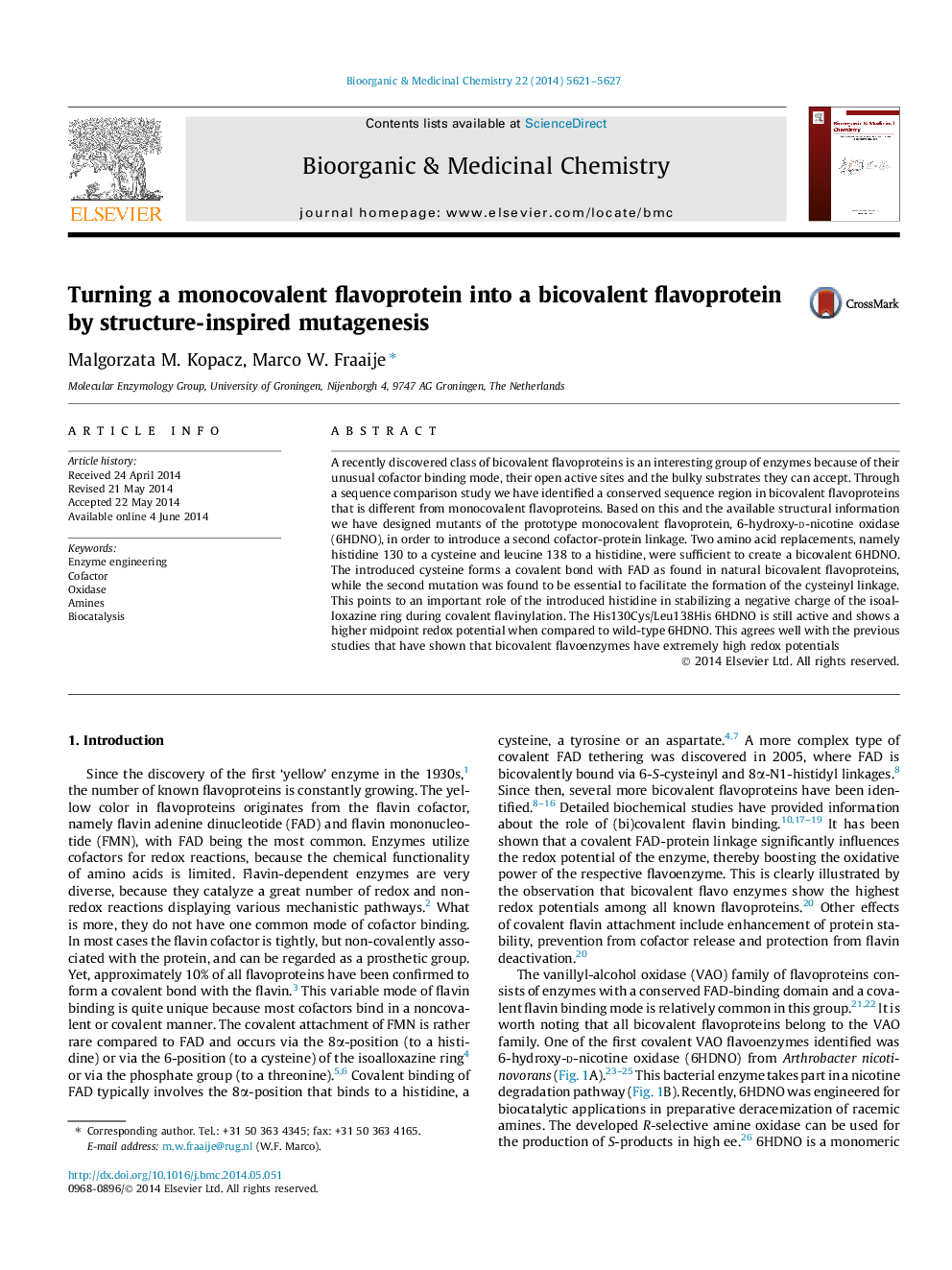| کد مقاله | کد نشریه | سال انتشار | مقاله انگلیسی | نسخه تمام متن |
|---|---|---|---|---|
| 1357833 | 981291 | 2014 | 7 صفحه PDF | دانلود رایگان |

A recently discovered class of bicovalent flavoproteins is an interesting group of enzymes because of their unusual cofactor binding mode, their open active sites and the bulky substrates they can accept. Through a sequence comparison study we have identified a conserved sequence region in bicovalent flavoproteins that is different from monocovalent flavoproteins. Based on this and the available structural information we have designed mutants of the prototype monocovalent flavoprotein, 6-hydroxy-d-nicotine oxidase (6HDNO), in order to introduce a second cofactor-protein linkage. Two amino acid replacements, namely histidine 130 to a cysteine and leucine 138 to a histidine, were sufficient to create a bicovalent 6HDNO. The introduced cysteine forms a covalent bond with FAD as found in natural bicovalent flavoproteins, while the second mutation was found to be essential to facilitate the formation of the cysteinyl linkage. This points to an important role of the introduced histidine in stabilizing a negative charge of the isoalloxazine ring during covalent flavinylation. The His130Cys/Leu138His 6HDNO is still active and shows a higher midpoint redox potential when compared to wild-type 6HDNO. This agrees well with the previous studies that have shown that bicovalent flavoenzymes have extremely high redox potentials
Figure optionsDownload as PowerPoint slide
Journal: Bioorganic & Medicinal Chemistry - Volume 22, Issue 20, 15 October 2014, Pages 5621–5627